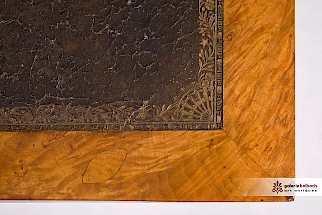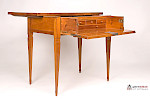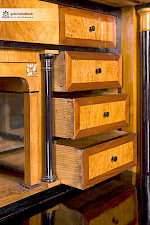Empire
 The Empire is the middle phase of classicism in France. It was formed from Louis XVI and the subsequent short epochs of Directoire (1795-1799) and Consulate (1799-1804). The chronological classification for the Empire, which literally means "empire", is set to the period from Napoleon's coronation as emperor to the end of his reign (1804-1814).
The Empire is the middle phase of classicism in France. It was formed from Louis XVI and the subsequent short epochs of Directoire (1795-1799) and Consulate (1799-1804). The chronological classification for the Empire, which literally means "empire", is set to the period from Napoleon's coronation as emperor to the end of his reign (1804-1814).
As a furniture style, however, the Empire has its offshoots well into the 1920s and even 1930s. Not only in France, but also in Germany, Austria, the Scandinavian countries and even in Russia, the Empire enjoyed great popularity.
The Empire developed almost at the same time as the Biedermeier and so we also find numerous parallels in the formal language. Both epochs are characterised by a strictly classicist and linear basic form. Precious woods such as cherry or mahogany, which was very expensive at the time, were popular in both eras.
Furniture from the Empire
Nevertheless, the Empire is clearly more ostentatious than the simple Biedermeier. A pronounced preference was developed for fully and semi-plastic decoration in metal, plaster or carved and set wood. Furniture was adorned with antique elements such as laurel wreaths, eagles, lions, sphinxes, dolphins, swans and warriors. Pilasters, columns and caryatids were also added. Often these elements are gilded or ebonised.

















